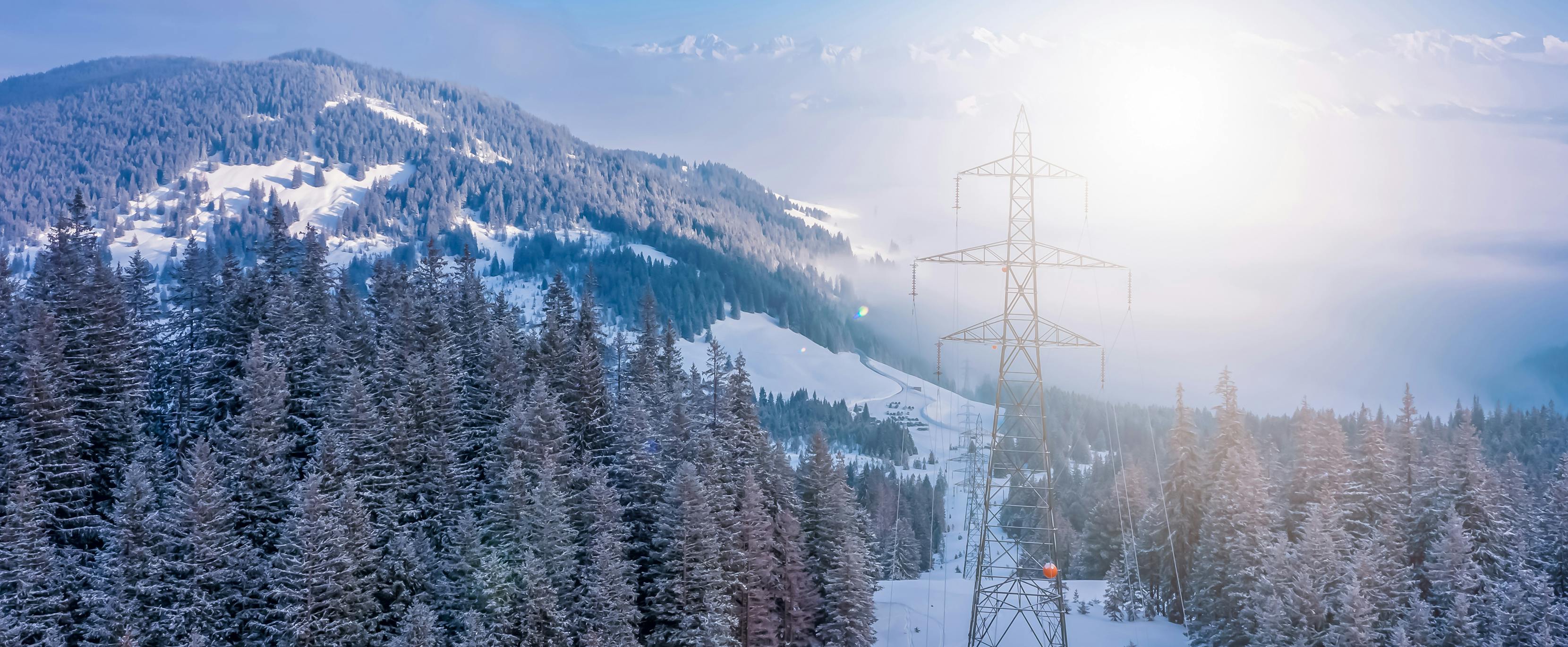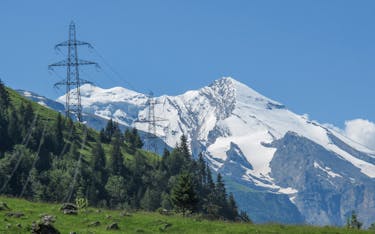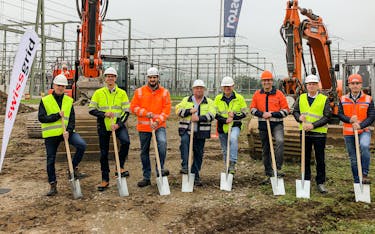The SFOE monitoring group submitted a recommendation to the Federal Council in favour of the corridor shown on the map. The working corridor put forward by Swissgrid in the SÜL application was optimised following an on-site inspection and various technical discussions.
The challenge of long underground cables
However, this corridor variant also poses challenges due to the 12-kilometre cable section that runs through a tunnel. Laying new underground cables in the Swiss transmission grid only remains possible to a very limited extent. This is the result of the Swissgrid cable study, which shows that the physical properties of underground cables make stable grid operation and the rectification of disturbances much more difficult. An uncontrolled increase in the proportion of underground cables in the extra-high-voltage grid would have a negative impact on Switzerland’s security of supply. For future grid projects, the possibility of installing an underground cable should therefore be considered from an overall perspective. You can find out more about the cable study in our blog post «When physics sets limits for technology».
Exploratory boreholes provide valuable insights
The Glaubenberg moorland is strictly protected – no electricity pylons may be built there and no cables may be laid in open trenches. This means that the only possible line route is via underground cables in a tunnel. Until now, little was known about the geology of the Glaubenberg area. Swissgrid commissioned the drilling of exploratory boreholes at an early stage. This showed that building a tunnel was feasible without affecting the moor. Swissgrid is confident that a tunnel can be implemented as planned. You can find out more about the exploratory boreholes in our blog post «For good reason».
Close links with the Bickigen – Mettlen project
The northern line section between the Littau and Mettlen substations is not part of this sectoral plan procedure. It will be examined as part of the Bickigen – Mettlen SÜL project. Find out more on the project website.
Public collaboration
Before the Federal Council makes its decision, private individuals are free to give their views on the monitoring group’s recommendation during the consultation and collaboration stage.
The project documents will be available from the relevant municipal administrations for 30 days from 21 November 2025. During this period, private individuals can take advantage of the public collaboration stage and contact the canton they live in:
- Amt für Gemeinden und Raumordnung des Kantons Bern
Abteilung Kantonsplanung
Nydegggasse 11/13
3011 Bern
kpl.agr@be.ch - Amt für Raumentwicklung und Energie
Abteilung Raumentwicklung
Flüelistrasse 1
6060 Sarnen
mary.sidler@ow.ch - Bau-, Umwelt- und Wirtschaftsdepartement
Dienststelle Raum und Wirtschaft
Raumentwicklung
Murbacherstrasse 21
6002 Luzern
rawi@lu.ch
The project documents can also be consulted on the website of the SFOE.
Next steps
The Federal Council is expected to define the corridor for the new line in mid-2026. Swissgrid will then prepare the construction project and submit the planning approval application to the competent authority, the Swiss Federal Inspectorate for Heavy Current Installations (ESTI). This will be followed by another public consultation. In the best-case scenario, provided there are no legal proceedings, Swissgrid will begin the construction of the line in 2032, and the work will take around six years. Once the new line has been commissioned, the existing 220-kV line will be dismantled, which will provide significant relief for the Glaubenberg moorland and settlement areas.
The following schedule is based on the current planning status and represents the best possible scenario, without taking into account potential legal proceedings.














